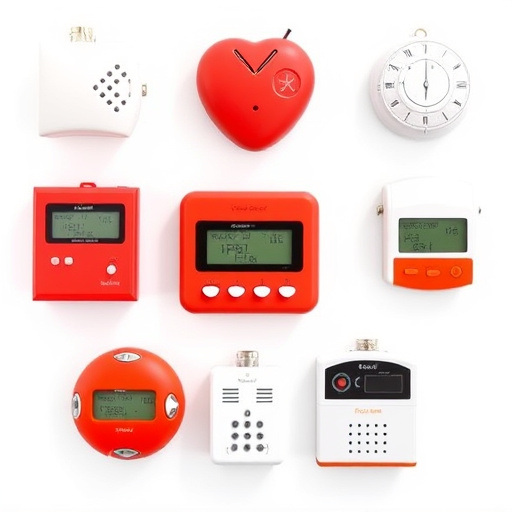Police-recommended body-worn panic alarms offer immediate assistance during emergencies, featuring automatic fall detection, GPS tracking, and long battery life. These compact devices connect wearers to emergency services or pre-selected contacts upon activation, enabling two-way communication in advanced models. Gaining popularity for on-site safety management among security firms and event organizers, these alarms provide crucial protection for both police officers and civilians, acting as a deterrent and enhancing peace of mind. Choosing the right alarm involves considering durable design, long-lasting battery life, loud sirens or silent app notifications, and GPS tracking functionality for quick response.
“Personal safety is paramount, especially in high-risk professions. This comprehensive guide explores body-worn panic alarms, a powerful tool for enhancing officer and civilian security. We delve into the intricacies of these devices, highlighting their critical role in emergency situations.
The article covers various aspects, including an overview of body-worn alarms, the importance of monitoring, and why police worldwide recommend them as essential personal safety measures. Furthermore, it guides readers through the process of selecting the ideal alarm system, focusing on key features to ensure effective protection.”
- Understanding Body-Worn Panic Alarms: A Comprehensive Guide
- The Role of Monitoring in Personal Safety Alarms
- Why Police Recommend Personal Safety Alarms for Officers and Civilians
- Choosing the Right Body-Worn Panic Alarm System: Key Features to Consider
Understanding Body-Worn Panic Alarms: A Comprehensive Guide
Body-worn panic alarms, often police-recommended personal safety alarms, are compact, wearable devices designed to offer immediate assistance in case of distress. These alarms are a powerful tool for individuals who may be at risk or want to enhance their personal security while alone or in unfamiliar environments. The alarm triggers a call for help, usually connecting the wearer to emergency services or pre-selected contacts.
Comprehensive features include automatic fall detection, GPS tracking, and long battery life. Some models also offer two-way communication, allowing users to speak with dispatchers or loved ones during emergencies. This technology is not only beneficial for individuals but is increasingly adopted by organizations like security firms and event organizers for enhanced on-site safety management.
The Role of Monitoring in Personal Safety Alarms
In today’s world, personal safety is a top concern for many individuals, and this is where police-recommended personal safety alarms step in as a vital tool. These alarms, often known as body-worn panic alarms, are designed to provide immediate assistance during emergencies, especially when someone finds themselves in a dangerous situation or feels threatened. Monitoring plays a crucial role in the effectiveness of these devices. With real-time tracking capabilities, monitoring systems ensure that help arrives promptly, allowing users to transmit their location and distress signals directly to emergency services.
This feature is particularly useful for those who frequently work alone or in remote areas where help may take longer to arrive. The monitoring aspect also serves as a deterrent, knowing that assistance can be accessed with the push of a button. By integrating this technology into personal safety alarms, individuals gain an extra layer of protection and peace of mind, ensuring that their well-being is prioritized.
Why Police Recommend Personal Safety Alarms for Officers and Civilians
Personal safety alarms have become an indispensable tool for both police officers and civilians, recommended by law enforcement agencies worldwide. These compact devices offer a simple yet effective means of instant panic notification, allowing users to quickly alert others in case of distress or an emergency situation. For officers on patrol, personal alarms provide an additional layer of protection, enabling them to signal for help discreetly when facing dangerous situations, such as ambushes or encounters with armed suspects.
In the event of a sudden attack or unexpected hazard, civilians equipped with body-worn panic alarms can promptly notify nearby police or emergency services, ensuring swift response times and potentially saving lives. This is especially crucial in high-risk environments or for individuals who frequently travel alone, providing them with peace of mind and an added sense of security. The police’s endorsement of personal safety alarms underscores their effectiveness as a proactive measure for personal protection, enhancing the safety and well-being of both officers and members of the public.
Choosing the Right Body-Worn Panic Alarm System: Key Features to Consider
Choosing the right body-worn panic alarm system is crucial for personal safety, especially in situations where quick response times can make all the difference. Features to look out for include durable design and water resistance, ensuring the device withstands various environmental conditions. A long-lasting battery life is also essential, allowing users to rely on their alarms without frequent recharging.
Additional key considerations are advanced alert systems that provide multiple notification options, from loud sirens to silent alerts via a companion app. GPS tracking functionality enhances emergency response by pinpointing the user’s location accurately. Moreover, easy-to-use interfaces and customizable settings ensure users can quickly activate alarms and tailor the system to their needs, making them a police-recommended personal safety alarm solution.
Body-worn panic alarms equipped with monitoring systems have become invaluable tools for both police officers and civilians, enhancing personal safety. These innovative devices offer a swift response in emergencies, ensuring peace of mind. With features like instant alert transmission, GPS tracking, and customizable settings, they provide a level of security that was previously unattainable. Given their effectiveness and the endorsement by law enforcement, body-worn panic alarms with monitoring are increasingly recognized as a game-changer in personal safety, especially in high-risk situations.
